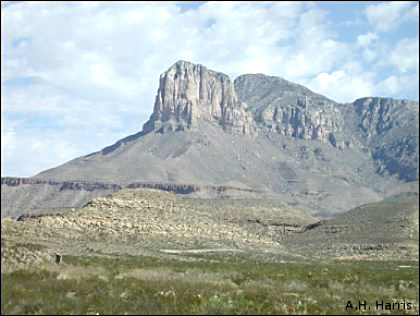

In desert regions, often one kind of plant seems to dominate, coming to characterize the desert in the minds of its inhabitants. For the warm Mojave, Sonoran, and Chihuahuan deserts, that plant is creosotebush. In the colder, more northern Great Basin Desert, it is Big Sagebrush. During the last ice age, the warm deserts were driven to the southwestern lowlands of Death Valley and the lower reaches of the Colorado River.
Indirect evidence in the form of fossil animals suggests that the sagebrush advanced southward as creosotebush retreated. Sagebrush-associated animals such as Sagebrush Voles made it from the latitude of southern Utah to at least the Mexican border in southwestern New Mexico and to the Guadalupe Mountains region to the east; and Sagebrush Grouse extended its range from its present-day limits in northern New Mexico to southern portions of the state.
Over the past couple of million years, numerous ice ages came and went.
Did this saga of creosotebush versus sagebrush shrub lands occur with each? Or, as with
human affairs, was each battle unique?

Contributor: Arthur H. Harris, Laboratory for Environmental Biology, Centennial Museum, University of Texas at El Paso.
Desert Diary is a joint production of the Centennial Museum and KTEP National Public Radio at the University of Texas at El Paso.

El Capitan at the southern end of the Guadalupe Mountains and creosotebush shrubland in the foreground. Photograph by A.H. Harris.